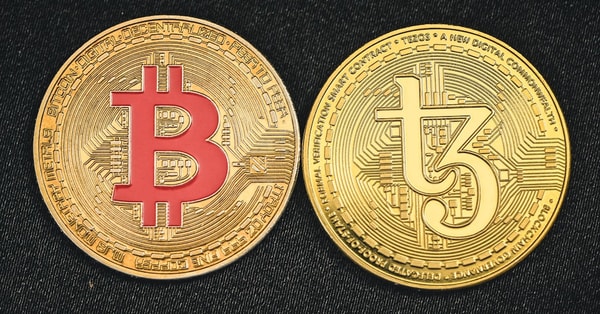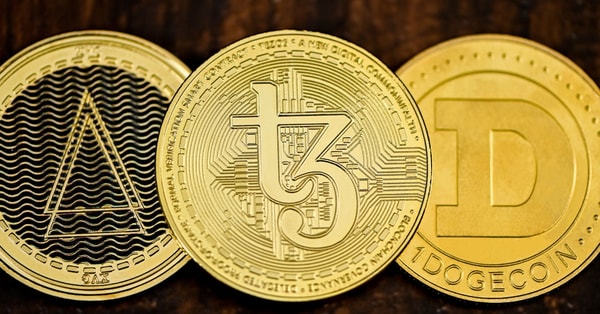Unlocking the Future: Edge Computing's Impact on Data Processing
Discover how edge computing is revolutionizing real-time data processing and changing the way our smart devices operate today!
Imagine a world where your smart devices can process information in milliseconds, enhancing everything from healthcare to autonomous vehicles. This isn’t just a futuristic dream; it’s happening now, thanks to the revolution of edge computing. Let’s dive into how this technology is reshaping our digital landscape.
So, what exactly is edge computing? At its core, it’s about processing data closer to where it’s generated instead of relying solely on a centralized data center. This shift has the potential to drastically reduce latency and enhance the user experience. Unlike traditional cloud computing models, which send data to far-off servers for processing—often leading to frustrating delays—edge computing brings the power of data right to the source.
I remember my first encounter with edge computing at a tech conference a couple of years ago. I stumbled upon a presentation showcasing how smart factories use edge devices to monitor machinery in real time. I was hooked! The thought of data being processed right at the machine, allowing instant adjustments, really blew my mind. It was a game-changer, sparking my fascination with this technology.
Unlocking the Future: Edge Computing's Now, let’s talk about why real-time data processing is crucial in our fast-paced world. We live in an age where split-second decisions can make all the difference. Think about online gaming; a lag of even a second can cost you your game. Or in financial trading, where prices can fluctuate drastically in moments. Real-time data processing ensures that information flows swiftly, keeping us ahead of the curve.
The demand for data processing solutions that can keep up with this speed is skyrocketing. As technology evolves, so do our expectations for speed and efficiency. It’s not just about processing data—it’s about doing it in real time.

The proliferation of IoT edge devices is truly fascinating. From smart home gadgets that automatically adjust your thermostat to wearables that track your health, these devices are becoming integral across various industries. They rely heavily on edge computing to function efficiently. Without it, we’d be stuck waiting for data to be processed in the cloud, and let’s be honest—nobody has time for that!
In a recent project, I utilized IoT edge devices to monitor environmental conditions in a manufacturing plant. By processing data on-site, we significantly reduced downtime. Machines communicated in real time, alerting us to potential issues before they escalated. The performance boost was astounding! It’s experiences like these that highlight the transformative power of edge computing.
As we look ahead, let’s discuss some exciting technology trends in edge computing that are set to shape 2024. Expect to see innovations that focus on integrating AI and machine learning at the edge. Why? Because the ability to crunch data right where it’s generated opens a world of opportunities for smarter, proactive solutions.
According to recent reports, experts predict enhanced interoperability between edge devices and traditional cloud infrastructures. Sounds promising, doesn’t it? But there are hurdles to overcome, such as security challenges and the need for robust frameworks. It’s a balancing act as we navigate the rapidly evolving landscape of edge computing.
Let’s take a moment to explore some real-world applications of edge computing that are truly making waves. In healthcare, remote patient monitoring systems utilize edge devices to relay vital statistics in real time, improving patient outcomes. Transportation companies are leveraging edge computing for traffic management systems, optimizing routes based on live data. And in manufacturing, smart factories are becoming the norm, revolutionizing efficiency.
One case study that particularly impressed me was a hospital in my area implementing remote patient monitoring. Patients could wear devices providing real-time health data to doctors, drastically reducing the need for in-person visits. This level of monitoring not only improved the quality of care but also highlighted how essential edge computing is becoming in the healthcare sector.
Now, let’s break down the benefits and challenges of edge computing. On the plus side, we have reduced latency, improved bandwidth efficiency, and enhanced security—yes, security! Processing data at the edge can minimize exposure to potential threats because data isn’t transmitted over long distances.
But let’s not sugarcoat it; challenges exist. Deployment costs can be high, especially for businesses needing to upgrade existing infrastructure. Integration complexity can also rear its head, given the variety of devices involved. And security concerns? Oh, they’re real and must be addressed proactively. From my experience in technology development, navigating these challenges requires a strategic approach and the right partners.

As we gaze into the future of edge computing, I can’t help but feel excited about the potential advancements in AI and machine learning that will emerge from this technology. Imagine a world where machines not only process data but also learn from it, adapting in real time to optimize performance across industries!
I invite you to consider how these emerging technologies might impact your industry. What innovations can you envision with edge computing at the helm? The possibilities are endless, and embracing them could unlock new efficiencies and drive innovation.
As we stand on the brink of a technological revolution, edge computing is not just a trend—it’s a necessity. By embracing this powerful paradigm shift in real-time data processing, we can unlock new efficiencies and innovations across sectors. Whether you’re a tech enthusiast or a business leader, understanding edge computing will keep you at the forefront of the technology trends shaping our futures. Let’s continue to explore and celebrate the possibilities that lie at the edge.
Key Insights Worth Sharing:
- Edge computing is set to redefine how we interact with technology through enhanced real-time data processing.
- The convergence of IoT and edge computing will catalyze innovation across various industries.
- Staying abreast of technology trends in 2024 will be essential for leveraging edge computing effectively.
Tags:
Related Posts
Discover the Best Fitness Trackers of 2023 for You
Looking for the perfect fitness tracker? Dive into our roundup of the best wearables of 2023 that support your health journey and lifestyle.
Revive Your Old Laptop: 10 Easy Tips for Longevity
Holding onto an old laptop? Discover 10 simple ways to breathe new life into it and optimize its performance without breaking the bank!
M2 MacBook Air vs M2 Pro: Which is Best for Video Editing?
Wondering if the M2 MacBook Air or M2 Pro is better for video editing? Let's explore their unique features to find your ideal creative companion!
The Ultimate Smartphone Showdown: Find Your Ideal Device
Feeling overwhelmed by smartphone choices? Let’s break down the best options for gaming, photography, and productivity to find your perfect match!
Empower Seniors: Must-Have Tech Gadgets for a Digital Life
Discover how tech gadgets can transform your aging parents' lives, making them more connected and independent in today's digital world.
Choosing the Right Laptop: A Student's Essential Guide
Feeling lost in the laptop jungle? Discover the must-have features that will make studying easier and help you find the perfect fit for your academic needs.